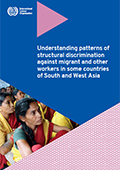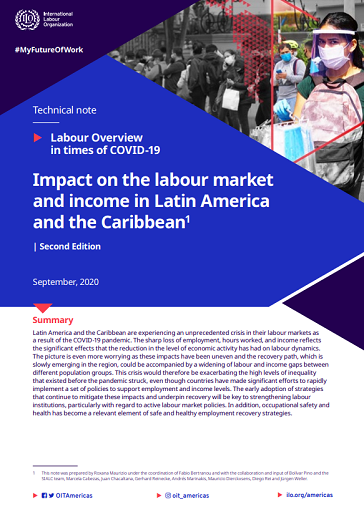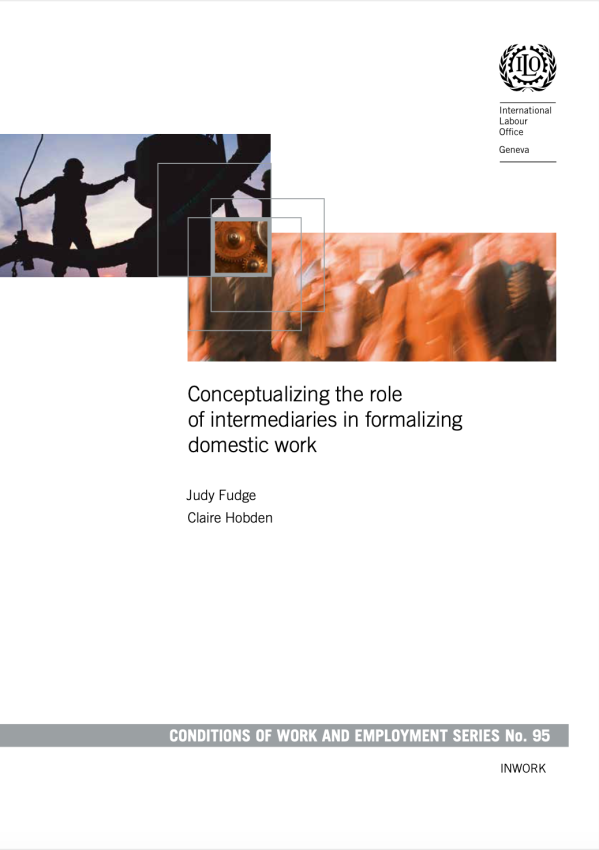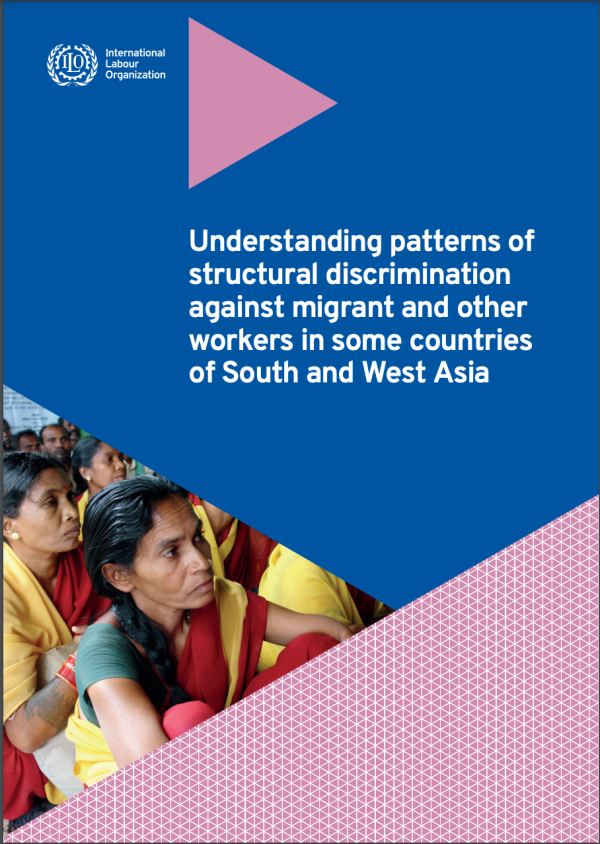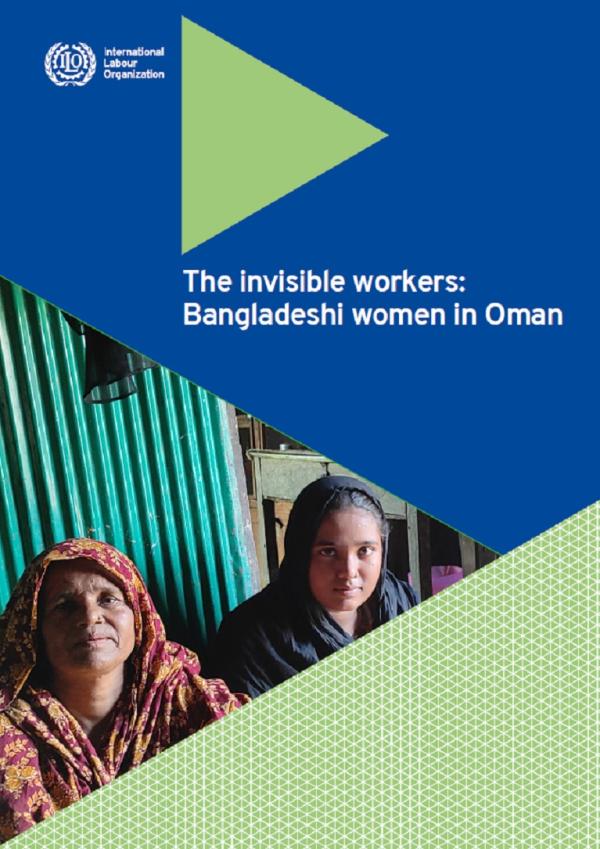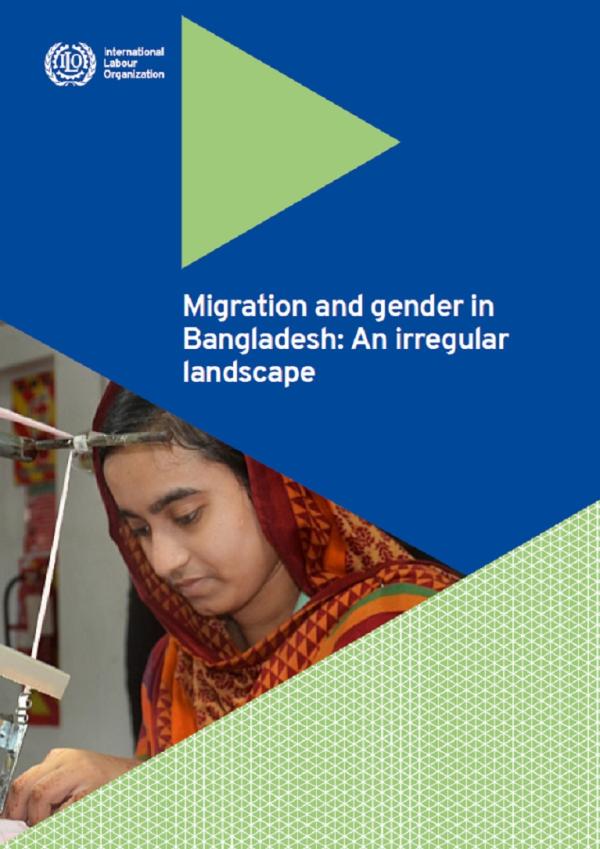Understanding patterns of structural discrimination of migrant and other workers in some countries of South and West Asia
This background paper reviews the literature that sheds light on the structural patterns of discrimination against migrant workers in some countries of South and West Asia. It also articulates recommendations that would help officials in UN agencies, international organizations, constituents and other civil society individuals and groups, while referring to the existing evidence of structural discrimination to support the application of international labour standards.
While references to international non-discrimination standards do occasionally surface in public discourses, this paper reviews evidence that discrimination in the world of work is not only characterized by socially deviant cases of discriminatory abuse, as reported in the media, but is rather intrinsic to the way various market economies and political systems are structured. This is manifested by indicators of privilege for some and indicators of deprivation for those at the bottom of the social and political hierarchies, including the interaction between both.
Type of document :
Country/Region : , , , , , , ,
Year of publication :
Theme : , , , , ,
Labour overview in times of COVID-19: Impact on the labour market and income in Latin America and the Caribbean [Second Edition]
The COVID-19 pandemic has generated unprecedented changes in the world of work. While the crisis has affected all workers, migrants and their families, especially those with irregular migration status and/or engaged in informal work, face additional challenges.
In this context, this Briefing Note has three objectives. First, it briefly analyses the labour landscape of migrant and refugee workers in Latin America and the Caribbean between 2010 and 2019. Second, it presents the results of a rapid assessment conducted by the ILO in Latin America and the Caribbean between August and October 2020. The assessment analyses the effects of the COVID-19 pandemic on the labour and socio-economic landscape, and the responses of refugees, asylum-seekers and migrant workers, government authorities, employers' organizations, trade unions and civil society organizations to the new situation. Finally, in the third part, the document proposes recommendations for good governance of labour migration and the socio-economic integration of migrants and refugees in the context of the COVID-19 pandemic.
Type of document :
Country/Region :
Year of publication :
Theme : ,
Conceptualizing the role of intermediaries in formalizing domestic work
Domestic workers have long provided a range of services for families from cleaning and cooking to caring for children, the elderly and disabled, to driving household members and tending gardens. Despite the crucial services they provide, in many countries, domestic work is characterised by a high incidence of informal arrangements and contributes significantly to informality especially among women. The level of organization of the domestic work sector varies dramatically from country to country. In some countries, domestic workers are hired informally, by word of mouth, through social networks. In other countries, intermediaries – such as agencies, digital platforms, coops and others – play a role in recruiting, placing, and employing domestic workers. As the role of these intermediaries increases, questions arise about the impact intermediaries have on formalizing domestic work and providing decent work for domestic workers.
Type of document :
Country/Region :
Year of publication :
Theme : , , ,
Understanding patterns of structural discrimination against migrant and other workers in some countries of South and West Asia
This background paper reviews the literature that sheds light on the structural patterns of discrimination against migrant workers in some countries of South and West Asia. It also articulates recommendations that would help officials in UN agencies, international organizations, constituents and other civil society individuals and groups, while referring to the existing evidence of structural discrimination to support the application of international labour standards.
While references to international non-discrimination standards do occasionally surface in public discourses, this paper reviews evidence that discrimination in the world of work is not only characterized by socially deviant cases of discriminatory abuse, as reported in the media, but is rather intrinsic to the way various market economies and political systems are structured. This is manifested by indicators of privilege for some and indicators of deprivation for those at the bottom of the social and political hierarchies, including the interaction between both.
Type of document :
Country/Region : , , , , , , ,
Year of publication :
Theme : , , , , ,
A comprehensive analysis of policies and frameworks governing foreign employment for Nepali women migrant workers and migrant domestic workers. Exploring the migration policymaking process with a specific focus on bans and restrictions on foreign employme
One of the principal causes and risk factors for forced labour and trafficking, identified by past research led by the International Labour Organization (ILO)’s Work in Freedom (WiF) Programme, is restrictive and gender-insensitive migration policies. These include restrictions on movement in the form of bans and restrictions on the departure of women migrant workers and migrant domestic workers from origin countries to seek foreign employment.
In the ILO’s efforts to support the construction of regular migration pathways for women migrant workers and migrant domestic workers which respect their safety, dignity, wellbeing and human and labour rights and which allow them to enrich their own lives, the lives of their families and communities back home, the Work in Freedom Programme of ILO Country Office for Nepal commissioned this present review between February and June 2020 as a comprehensive analysis of legal and policy frameworks governing foreign employment for women migrant workers and migrant domestic workers. This review is an update of ILO’s previous study of migration bans, 'No Easy Exit: Migration Bans Affecting Women from Nepal' published in 2015, but fills an important research gap by focusing on the policy formulation phase itself. The findings identify and characterize the ways in which stakeholders (governmental and otherwise) formulate policy narratives, negotiate policies and regulations and invoke knowledge claims in order to justify regulatory and policy interventions related to women migrant workers, migrant domestic workers and associated thematic areas – including anti-trafficking frameworks, frameworks combatting forced labour, domestic work and more.
Type of document :
Country/Region : , , ,
Year of publication :
Theme : , , , , , , , ,
The invisible workers: Bangladeshi women in Oman
The purpose of this ethnography is to follow the lives of working women from Bangladesh and document and analyse the diversity of their individual and collective experiences. The findings reveal a reality that contrasts from the usual characterisations of migrant women.
This study explores the work and lives of women from Bangladesh in Oman. It is meant to be an exploratory study about the working and living conditions of women domestic workers from Bangladesh. The study lays out the context of women’s migration from Bangladesh to Oman, it’s relationship with the migration of men, the types of work and living arrangements that were encountered, the social networks of migrant women and other considerations that Bangladeshi women reflected on. This ethnographic study fills a gap on research regarding migrant workers from Bangladesh in Oman.
Type of document :
Country/Region : , , , ,
Year of publication :
Theme : , , ,
Migration and gender in Bangladesh: An irregular landscape
This survey is part of a series of studies commissioned by the Work in Freedom Programme of the ILO in order to document the motives and trajectories of migrant women workers. The survey explores the local and regional gendered specificities of migration and work-seeking in selected localities of Bangladesh by collecting gender disaggregated data and analysing contrasting patterns that inform women and men’s migration.
This report presents the result of a survey conducted in five districts of Bangladesh to document international labour migration. The districts were selected for their contrasting features. Two districts, Barguna and Patuakhali, are relatively new to women’s migration, whereas three districts, Manikganj, Narayanganj and Brahmanbaria, have a long history of such movement. The extent of women’s participation in migration was a major criteria for the selection of districts aimed to capture a range of situations. In all, 8,437 migrant workers were recorded in 125 villages. The analysis brings out important consideration that challenge common assumptions on women’s migration. For example, the survey brings out hard evidence that questions policy assumptions that women migrate homogenously from around the country or that their cost of recruitment is high. In that sense, this survey’s findings have important implications on local, national and regional policy making related to safe migration, anti-trafficking and labour policies.
Type of document :
Country/Region : , , ,
Year of publication :
Theme : , , ,
Subscribe to the Fair Recruitment Initiative Newsletter
Sign up to receive news delivered to your inbox.

